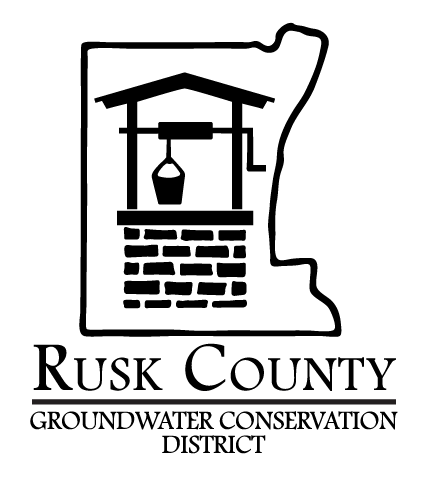With temperatures exceeding 100 degrees in late June leading into July, many homeowners are actively watering their landscapes to keep plants and trees alive. Did you know that outdoor water use can account for 50 to 80 percent of a home’s total water use in spring and summer? Much of this water is often wasted by inefficient landscape watering practices, including runoff.
With this in mind, the Rusk County Groundwater Conservation District encourages people to incorporate water-efficient practices into their landscapes to avoid water waste. Add water efficient plant varieties into your landscape. These plants are native or well-adapted to climate conditions in your area. Additional information is available at texastreeplanting.tamu.edu and texassuperstar.com.
Precipitation in Rusk County is tracking below our average cumulative so far in 2018. At the end of June, we are behind by 3 inches and to catch up with what we need by the end of July is just over 6 inches. We currently are experiencing moderate drought conditions. To find more on our drought status please visit, rcgcd.org/monitoring-programs.
Water Wisely with these outdoor irrigation tips and you will see the typical summer rate increase of your water bill or electricity decline, a healthy lawn, and avoid potential problems of drawdown on our aquifer.
- Reduce water evaporation by irrigation at proper times. Evaporation loss can be 60 percent or higher during the day. You can reduce this by irrigation in early morning or late evening.
- Do not water landscapes on windy days. Wind drift and evaporation increases water losses.
- Consider use of drip irrigation to water narrow parkway areas or reduce turf in those areas with water wise plant varieties that can thrive on less water.
- Position sprinklers to avoid irrigating driveways and sidewalks. Check spray patterns for variations caused by changes in water pressure.
- Use a low-angle sprinkler that throws large drops of water – rather than on that sprays a fine mist of water that can evaporate quickly.
- Homeowners with automatic sprinkler systems should regularly check spray nozzles to make sure they are operating properly. Be sure to replace any broken sprinkler heads, valves, seals, or pipes.
- Adjust the run time and frequency of automatic landscape sprinkler systems in response to changes in rainfall/temperature.
- Consider “smart” technology. Climate or soil moisture sensor-based controllers evaluate weather or soil moisture conditions and then automatically adjust the irrigation schedule to meet you landscape’s needs.
- Consider rainwater harvesting to collect and store water from the next rain for future use in your landscape. In East Texas, your roof can provide 4,000-7,000 gallons of water a month. Find more information at rainwaterharvesting.tamu.edu.
- East Texas Lawns can be properly maintained and kept healthy with 0.75”-1”(inch) of water a week. Also, only when needed. Visit the Texas Landscape watering Guide.
To protect our groundwater resources and secure water for years to come starts with better irrigation and water use practices. Remember “There’s no substitute for Water”. Visit rcgcd.org for more information.
